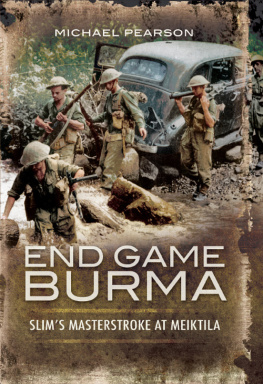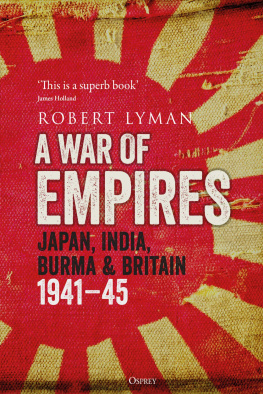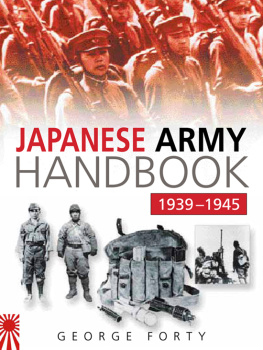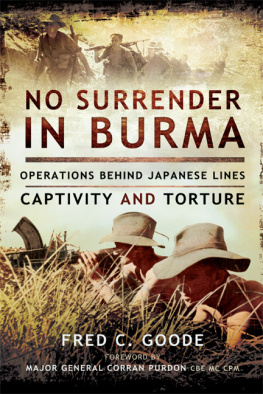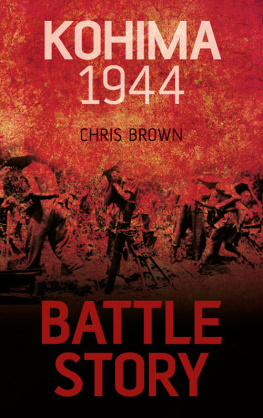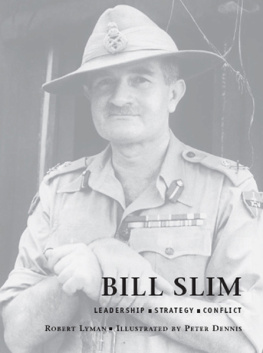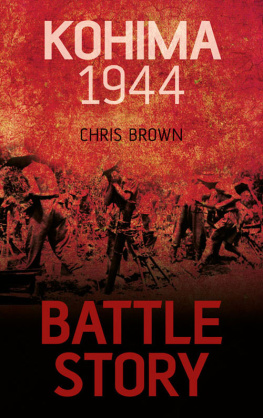
By the same author:
Red Sky in the Morning, The Battle of the Barents Sea 1942
The Ohio and Malta, The Legendary Tanker that Refused to Die
The Burma Air Campaign December 1941August 1945

First published in Great Britain in 2010 by
PEN & SWORD MILITARY
An imprint of
Pen & Sword Books Ltd
47 Church Street
Barnsley
South Yorkshire
S70 2AS
Copyright Michael Pearson, 2010
ISBN 978-1-84884-114-7
Digital Edition ISBN: 978-1-84468-588-2
The right of Michael Pearson to be identified as the author of this work has been asserted by him in accordance with the Copyright, Designs and Patents Act 1988.
A CIP catalogue record for this book is available from the British Library
All rights reserved. No part of this book may be reproduced or transmitted in any form or by any means, electronic or mechanical including photocopying, recording or by any information storage and retrieval system, withoutpermission from the Publisher in writing.
Typeset by Concept, Huddersfield, West Yorkshire
Printed and bound in England by the MPG Books Group.
Pen & Sword Books Ltd incorporates the Imprints of Pen & Sword Aviation, Pen & Sword Maritime, Pen & Sword Military, Wharncliffe Local History, Pen & Sword Select, Pen & Sword Military Classics, Leo Cooper, Remember When, Seaforth Publishing and Frontline Publishing
For a complete list of Pen & Sword titles please contact
PEN & SWORD BOOKS LIMITED
47 Church Street, Barnsley, South Yorkshire, S70 2AS, England
E-mail:
Website: www.pen-and-sword.co.uk
Those struggling along the road were almost all in their twenties, yet they stooped like old men Nobody could have believed that these men had once possessed the strength to survive a series of intense battles
When confronted by the actual scenes I was not moved to tears, perhaps owing to my youth or the fact that I had an unsentimental view of the war in those days. But I do not have the same unsentimental view now, nor am I young any longer. Now I can freely cry over my friends who died.
Former Staff Sergeant Yasumasa Nishiji,
20th Independent Engineering Regiment
Contents
Note: For ease of identification Japanese units and those of their allies are given in italics.
List of Plates
Acknowledgements
The Imperial War Museum Photographic Archive, London.
The Library of Congress, Washington DC.
The National Archive, Kew.
The National Archives and Records Administration, Modern Military Branch, Maryland, USA.
Mrs Carol Toone-Hollis (nee White) for her kind permission to use photographs and anecdotes from her fathers records.
List of Abbreviations
| ABDACOM | American, British, Dutch and Australian Command |
| AHQ | Air Headquarters |
| ALFSEA | Allied Land Forces South East Asia |
| CCTF | Combat Cargo Task Force |
| EAC | Eastern Air Command |
| GOC | General Officer Commanding |
| HQ | Headquarters |
| INA | Indian National Army |
| JAAF | Japanese Army Air Force |
| NCAC | Northern Combat Area Command |
| PBF | Patriotic Burmese Forces |
| RAF | Royal Air Force |
| RN | Royal Navy |
| SACSEA | Supreme Allied Command South East Asia |
| SEAC | South East Asia Command |
| USAAF | United States Army Air Force |
Maps

Map 1. XXXIII Corps and IV Corps, the Irrawaddy crossings.

Map 2. XXXIII Corps breakout from the Irrawaddy bridgeheads.

Map 3. 17 Indian Division, the approach to Meiktila.

Map 4. 17 Indian Division, the capture of Meiktila.

Map 5. Effective air transport range.

Map 6. The 14th Army advance to Rangoon.
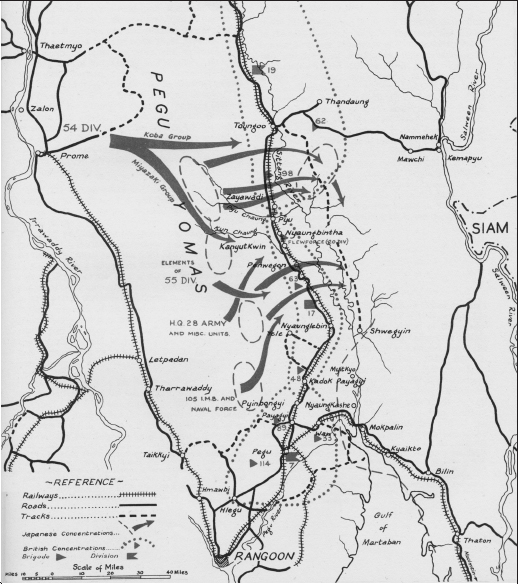
Map 7. Japanese breakout from the Pegu Yomas, situation 19 July 1945.
Introduction
Two factors greatly influenced the distinctive nature of the campaign in Burma during the Second World War topography and climate. At 240,000 square miles (386,241 km) Burma covers a vast area comprised principally of mountainous jungle. The country is dissected north to south by four major rivers and attendant mountain ranges. The Irrawaddy River rises in the Himalayas to the north, close to Fort Hertz, and runs southward down the spine of the country across a dry central plain to the Rangoon delta. The Chindwin also has its source in the northern mountains, to the west of the Irrawaddy, joining the latter at Pakkoku, south of Mandalay. The source of the Sittang lies to the east of the Irrawaddy, just south of Meiktila, the river running south to the Gulf of Martaban. The last of the countrys great rivers, the Salween, lies further east still, rising in China and dissecting the 3,000 feet high (914m) tableland that constitutes eastern Burma, the river subsequently crossing the Tenasserim Peninsula to reach the Gulf of Martaban at Moulmein.
All four rivers have numerous tributaries that criss-cross the country, most of which formed a serious obstacle to movement during the Burma Campaign, as did the mountain ranges, particularly the Naga Hills along the border with India which rise to 12,000 feet (3,657m). To add to the difficulties these ranges would be sheathed in dense jungle up to a height of 6,000 feet (1,828m).
The climate in Burma is generally more equable than that of India, the more mountainous country not being subject to the long, hot, dry summers to which southern India in particular is prone. However, Burma does have a monsoon season starting in April, continuing through to mid September and affecting the entire country with the exception of the previously mentioned central plain around Mandalay and Meiktila. During the monsoon, rivers, valleys and flat areas flood and keeping anything dry, such as clothes, bedding and equipment, is virtually impossible and health suffers as a result. In the 1940s disease associated with unclean water was rampant, British and Allied forces reporting 250,000 cases of malaria and dysentery in the year 1943/44 alone.
A further hindrance to effective campaigning was the road system, primitive in the extreme, and comprising for the most part little more than dirt tracks. The main all weather roads ran from Rangoon to Mandalay, from Meiktila through the Shan State, and from Toungoo through the Karen Hills to Loilem.
Next page
